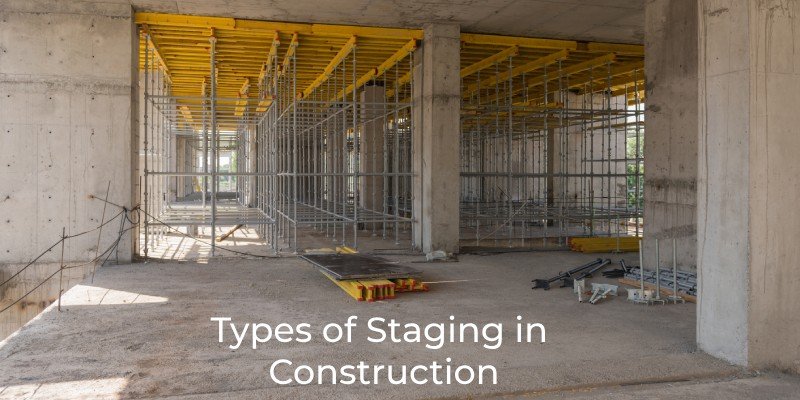Propping in Construction Explained: Methods & Importance
In the dynamic world of Construction, ensuring structural stability is paramount. Propping, a method often employed during construction phases, plays a crucial role in maintaining the integrity of buildings and infrastructure projects. This article delves into the significance of propping in Construction and explores various methods used in the industry.
Understanding Propping in Construction
Propping in Construction involves the strategic placement of temporary or permanent supports to enhance the stability and integrity of structures during the building process. These supports distribute loads, minimize structural risks, and ensure the safety of workers and the environment. Essentially, propping acts as a vital safety measure, akin to scaffolding, until the project reaches completion.
Types of Propping Systems
Here are the common types:
Temporary Propping
These are employed during construction phases to support loads temporarily.
These include Acrow props, raking shores, and flying shores.
Acrow Props
Acrow props, known as telescopic props, support ceilings, walls, and floors during construction or renovation projects. Construction workers use these adjustable steel supports, extending them to different lengths as needed for temporary support.
Raking Shores
Raking shores provide lateral stability to walls or structures under construction by inclining them. Construction workers commonly use them in sloped construction scenarios where vertical support alone does not suffice.
Flying Shores
Flying shores, also referred to as horizontal shores, are temporary supports used to stabilize walls or structures during Construction. They provide lateral support and are particularly useful in scenarios where vertical support is inadequate.
Permanent Propping
These are integrated into the final structure to provide long-term support. These may include steel beams and reinforced concrete columns.
Steel Beams
Steel beams are commonly used in construction projects to provide structural support. They are durable, resistant to corrosion, and offer high load-bearing capacity, making them suitable for permanent propping applications.
Reinforced Concrete Columns
Reinforced concrete columns are essential structural elements in buildings and infrastructure projects. They provide vertical support and contribute to the overall stability of the structure.
Importance of Propping in Construction

Propping plays a critical role in ensuring the safety and stability of construction projects.
It provides :
- Structural Stability: Supporting concrete structures during curing maintains their stability, preventing potential structural failures.
- Preservation of Shape: By minimizing deformation, proper support ensures concrete maintains its intended shape and form.
- Strength Development: Providing support allows concrete to develop optimal strength, enhancing the durability of the construction.
- Safety Assurance: Ensuring structural integrity through support measures guarantees a safe working environment for construction personnel and the public.
- Time Efficiency: Eliminating the need to wait for concrete to fully cure before proceeding expedites the construction timeline.
- Cost Savings: Preventing structural issues early on helps avoid expensive repairs or delays later in the project.
- Adaptability: Support methods can be tailored to suit various construction scenarios, offering flexibility in application.
- Regulatory Compliance: Adhering to building codes mandates the implementation of support measures, ensuring compliance with safety regulations.
Factors to Consider When Choosing Propping Systems
When selecting propping systems for a construction project, several factors must be considered.
These are:
- Load-Bearing Capacity Assessment: Evaluate the weight and distribution of loads thoroughly to ensure the chosen system can adequately support them.
- Material Suitability Analysis: Consider the construction materials, environmental conditions, and structural requirements for optimal compatibility and performance.
- Duration of Propping Evaluation: Determine the temporary or permanent need for support and select systems accordingly for effective duration management and structural integrity.
- Site Accessibility Assessment: Assess the ease of access to the construction site for efficient installation, maintenance, adjustment, and removal of support systems.
- Safety Requirements Prioritization: Prioritize systems that meet safety standards and minimize risks to workers, bystanders, and the surrounding environment.
- Cost-Effectiveness Consideration: Balance the initial investment with long-term benefits and consider the overall cost-effectiveness of the chosen support systems for budget optimization and project success.
Methods of Propping in Construction

Here are some popular Methods of Propping in Construction:
Acrow Props
Acrow props are versatile adjustable steel supports commonly used in construction projects.
- Selection of Acrow Props: Determine the appropriate size and quantity of Acrow props based on the load-bearing requirements and the height of the area requiring support.
- Positioning: Place the base plate of each Acrow prop securely on a stable surface, ensuring it is perpendicular to the load it will support.
- Adjustment: Extend or retract the Acrow props to the desired height using the adjustable mechanism, ensuring a snug fit between the prop and the load-bearing surface.
- Securing: Lock the Acrow props in place by tightening the adjustment collar to prevent any movement during construction activities.
- Monitoring: Regularly inspect the Acrow props throughout the construction process to ensure they remain secure and provide adequate support.
Raking Shores
Raking shores are inclined supports used to provide lateral stability in sloped construction scenarios.
- Assessment: Evaluate the slope of the construction area to determine the angle and length of the raking shores required for support.
- Installation: Position the base of each raking shore firmly on a stable surface at the base of the slope, ensuring it is angled correctly to provide lateral support.
- Bracing: Securely anchor the top of each raking shore to the structure or a suitable anchor point using bracing materials such as timber or steel.
- Adjustment: Fine-tune the angle and tension of the raking shores as necessary to maintain stability and prevent any shifting of the supported structure.
- Monitoring: Regularly inspect the raking shores to ensure they remain properly braced and aligned, making adjustments as needed to accommodate changes in the construction process.
Steel Beams
Steel beams offer superior strength and durability, making them ideal for permanent propping applications.
- Design: Engage a structural engineer to design steel beams tailored to the specific load-bearing requirements and structural considerations of the construction project.
- Fabrication: Fabricate the steel beams according to the engineer’s specifications, ensuring they meet all relevant safety and quality standards.
- Installation: Position the steel beams in their designated locations within the structure, using lifting equipment or cranes as necessary to ensure precise placement.
- Connection: Securely fasten the steel beams to the existing structure or support columns using appropriate connection methods such as welding or bolting.
- Testing: Conduct load tests on the steel beams to verify their structural integrity and ensure they can withstand the anticipated loads during Construction and beyond.
Key Considerations for Propping Design
Designing an effective propping system requires careful consideration of the following:
- Site assessment: Thoroughly assess construction site conditions before designing support systems.
- Structural engineer consultation: Seek expert advice to ensure safety and structural integrity.
- Compliance with regulations: Ensure strict adherence to building codes and standards.
- Load-bearing capacity: Determine the maximum load requirements for support systems accurately.
- Material suitability: Carefully select materials based on project requirements and environmental factors.
- Duration of support: Consider the specific timeframe for which support systems will be necessary.
Conclusion
Propping is a vital aspect of Construction, ensuring safety, stability, and structural integrity throughout the building process. By understanding the importance of propping and adopting appropriate methods and technologies, construction professionals can ensure the successful completion of projects while prioritizing safety and sustainability.
FAQs
What is propping in Construction?
It refers to the temporary or permanent support provided to structures during various phases of Construction to ensure stability and safety.
Why is propping necessary?
It is necessary to distribute loads effectively, minimize the risk of structural failures, and ensure the safety of construction workers and the public.
What are the common types of propping systems?
Common types include Acrow props, raking shores, flying shores, steel beams, and reinforced concrete columns.
How do engineers determine the appropriate propping method for a construction project?
Engineers consider factors such as load-bearing capacity, material suitability, site conditions, and regulatory requirements when selecting the appropriate method for a construction project.
Are there any environmental concerns associated with propping?
While propping itself may not pose significant environmental concerns, the materials used in systems and their disposal after use can have environmental implications. It is essential to choose sustainable materials and dispose of components responsibly.





